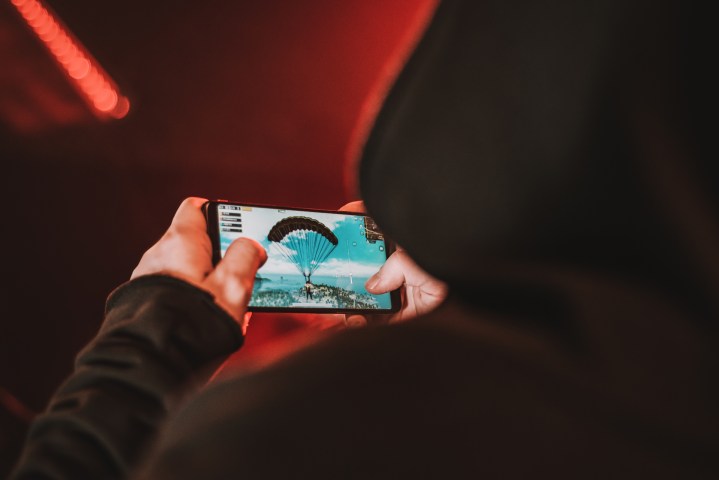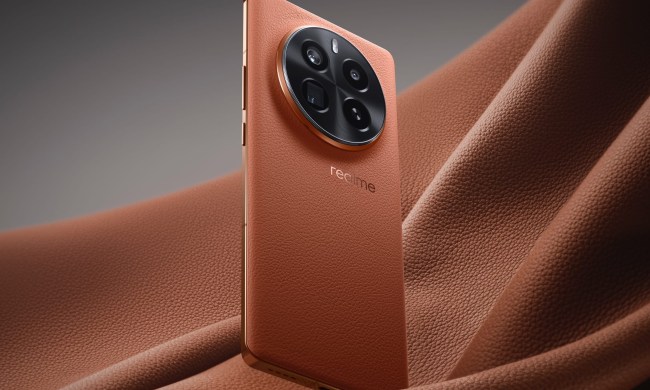
The Razer Phone needs to watch its back, because it’s no longer the only gaming-focused smartphone on the market. Red Magic — the gaming arm of ZTE-owned Nubia — has taken the wraps off its first phone: the Red Magic Phone. If you’re an avid mobile gamer and your current phone just isn’t cutting the mustard, then you’ve now got more than one choice for your next upgrade. Here’s everything we know about the Red Magic Phone.
Release date and pricing
The Red Magic Phone is available as part of an Indiegogo campaign that launched April 26, and hit its $50,000 goal only four days later, on April 30. Early adopters will be able to snag the phone for a reduced price of $399, a 24 percent discount on the retail price of $529.
Two thousand of these phones are currently available through Indiegogo, with 1,000 running Android 8.1 Oreo. Of these, 750 are available as a standard package, and another 250 are available at the same $400 price for anyone who wants to take part in the early testing. The remaining 1,000 phones will be running the China-specific Red Magic OS rather than
According to the campaign’s information, the Chinese models will be shipping out in May, while the standard
Unfortunately, the Red Magic phone will not be available in North America at launch due to issues with the connectivity bands. However, Red Magic is working on a model specifically for the U.S. and Canada, and following an outcry from those regions, Red Magic has offered a very limited number of the early testing models to North Americans, with a promise of a swap for the N.A. model once available in fall 2018. Red Magic has also confirmed that the $50 voucher purchasable for $9 can also be used after release to get the phone for the early adopter price of $400.
As always, be aware of the pitfalls of crowdfunding.
Design

The Red Magic Phone is the smartphone equivalent of the mullet — business in front, party in the back.
The front of the phone is dominated by a 5.99-inch IPS LCD display running a 2160 x 1080, 18:9 resolution. You’ll find slim bezels around the edges and a minimal forehead and chin at the top and bottom of the black anodized aluminum frame. The front-facing selfie camera is situated at the top of the phone, right where you’d expect it to be. So far, so good.
Then you flip the phone over and everything goes completely crazy. The back of the phone steadily rises toward the center, sloping upwards from the edges into a prism shape. According to Red Magic, the Red Magic Phone went through hundreds of design iterations, with special attention going towards making the phone ergonomically comfortable during long-play sessions. It’s certainly a unique shape and look, and we can’t wait to get our hands on it to tell you how it feels.
The weird back panel isn’t even the best part — instead, one of the phone’s wow factors waits at the top of the raised ridge. Gamer culture is apparently obsessed with RGB lighting, and that’s why you’ll find an RGB strip extending along the phone’s back, running below the fingerprint sensor and

You’ll also find four speakers on the back, highlighted in red. These speakers use smart amplification technology and an inbuilt DAC to provide an expansive soundstage. The Dolby-enhanced speakers on the Razer Phone were one of that phone’s highlights, and we’ll have to see how this phone compares.
There’s a USB-C port at the bottom of the phone, and a headphone jack at the top. You’ll find the power button below the volume rocker, and above both is the Red Magic Phone’s dedicated GameBoost button — which, when flipped, will divert more of the phone’s resources to whichever game is active, reducing loading times and enhancing visual fidelity and frame rate.
Specifications

Red Magic Phone Specs
- CPU: Qualcomm Snapdragon 835
- Memory: 8GB
- Storage: 128GB
- MicroSD storage: No
- Display size: 5.99-inch IPS LCD
- Resolution: 2160 x 1080
- Connectivity: Bluetooth 5.0
- Battery: 3,800mAh
- Size: 158.1 x 74.9 x 9.5 mm
- Weight: 185 grams
- Operating system: Android 8.1 Oreo
You’d be right to expect a gaming-focused
The CPU is perhaps the one area that the Red Magic Phone could let us down — it’s packing last generation’s Qualcomm Snapdragon 835. While the Snapdragon 835 is still a powerful chip, we’re living in a post-Snapdragon 845 world, and it’s weird to see a phone that sells itself on high gaming capabilities not show up with the latest hardware. With that said, Red Magic says it prefers the more stable nature of the Snapdragon 835, and say it strikes the perfect balance between power consumption, power, and temperature. It also claims to have tailored the Snapdragon 835’s hardware to reduce power consumption by 40-percent.
Running high-intensity games can make a phone hot, but there’s no need to worry about overheating, as Red Magic has equipped its phone with an air convection cooling system that takes heat away from the phone using a series of heat-conductive materials, multiple layers of graphite, and cooling vents that funnel heat away from the phone.

The prism-shaped back also helps to take heat away from the phone’s components — a larger surface area giving a larger area for heat to escape — and that results in a phone that Red Magic claims has a peak temperature of 10 degrees less than an
Finally, the phone is also rocking a huge 3,800mAh battery that Red Magic claims can last for up seven hours of Arena of Valor gameplay.
Camera

The Red Magic Phone sports a single 24-megapixel lens on the back of the phone, with an aperture of f/1.7 and EIS. The camera also comes equipped with Nubia’s NeoVision 7.0 Imaging Engine, a software package that adds a bunch of extra features. This seems like a decent little snapper, but with the focus of the phone on gaming performance, don’t be surprised if the camera turns out to be one of the weaker parts of the phone. Still, we look forward to testing it out.
You’ll find an 8MP selfie-shooter around the front of the phone, and the phone is also able to record at
Software
The international Red Magic Phone will ship with Android 8.1 Oreo, without a manufacturer skin. We like stock
Red Magic is also a part of Nubia, which is a part of ZTE — which was recently banned from buying U.S. technology for seven years. Those legal issues could make using Android a bit trickier, and could spell trouble for the phone down the line. We’ll keep you updated here if anything changes.
Updated on April 30: Revised the pricing and availability section with the new tester models for North America.

